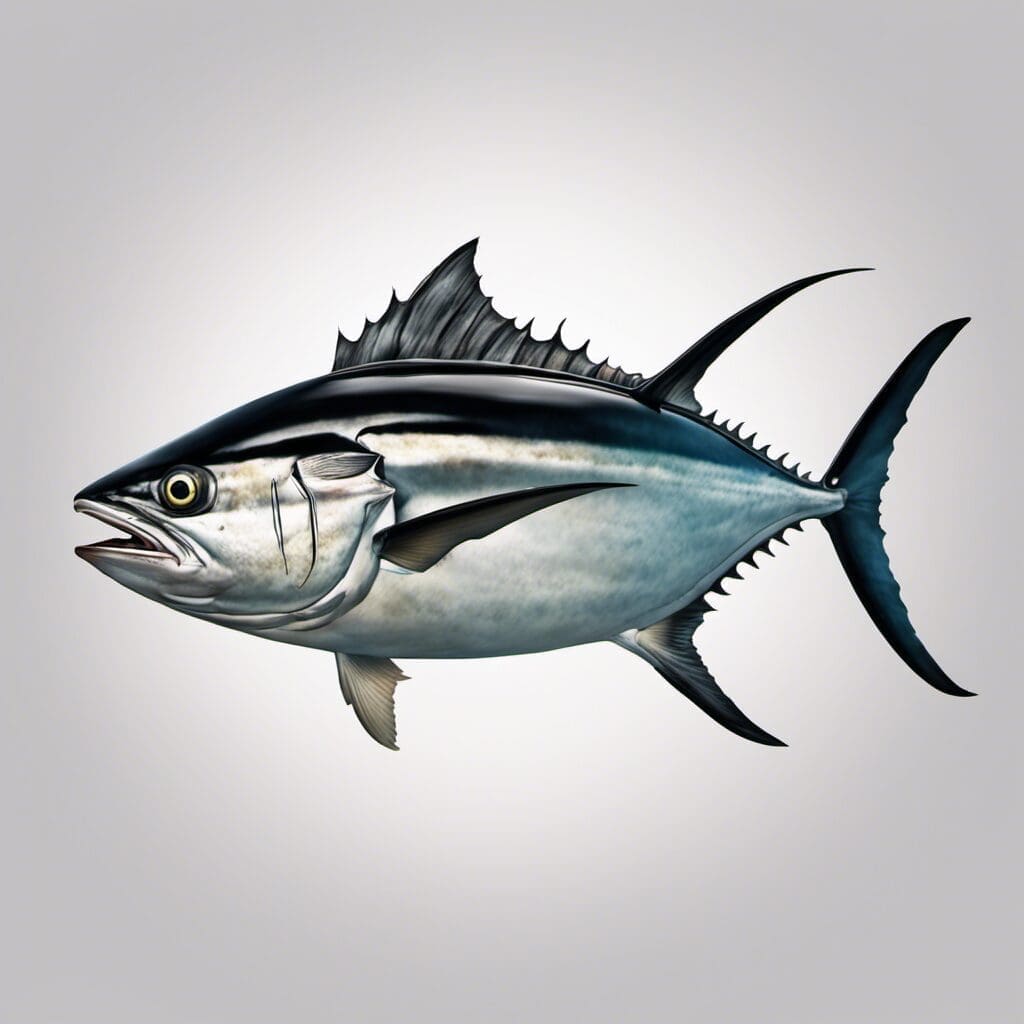Introduction
Bigeye Tuna, or Thunnus obesus, is a species of tuna in the mackerel family, Scombridae. Known for its high speed and endurance, this pelagic fish is a beloved target for sport fishing enthusiasts and is a prized component in the global seafood industry.
Conservation Status
The Bigeye Tuna is classified as a Vulnerable species by the International Union for Conservation of Nature (IUCN). Although strong regulations and extensive conservation efforts are in place, overfishing, mainly due to the high commercial demand for this species, remains a significant threat to their population status.
Statistics
| Property | Average | Range |
|---|---|---|
| Length | 200 cm | 170 – 250 cm |
| Weight | 150 kg | 80 - 200 kg |
| Average Lifespan | 10 – 12 years |
Distribution
The Bigeye Tuna is native to the open waters of all tropical and subtropical oceans. They demonstrate a particular preference to cooler, deeper waters. Extensive migration patterns have been observed, often covering great distances across multiple oceanic basins.
Habitats
Generally, Bigeye Tuna prefer the warmer tropical and subtropical waters. However, unlike its tuna relatives, Bigeye can tolerate colder temperatures considerably and is known to dive to great depths, anywhere between 250-500 meters during the day.
When and Where to See
Bigeye Tuna is present year-round in tropical waters, but its availability in subtropical regions is generally from late spring through early fall. They are primarily deep-sea dwellers during the day, rising closer to the surface at dusk and dawn.
Best Fishing Locations
Bigeye Tuna is highly sought after by sport-fishers, particularly in coastal waters. Some of the best locations for fishing Bigeye Tuna are:
- The Canary Islands
- Madagascar
- Florida Keys
- Hawaii
- Gulf of Mexico
Fishing Tips
Identifying potential Bigeye Tuna habitats can be challenging without specific experience. The best tip is to look for areas with a rich prey base, which usually includes warmer waters with abundant shrimp and squid populations.
How to Catch
Bigeye Tuna is generally caught by commercial longline operations or recreational trolling. Preferred bait includes squid and small fish, and the best fishing period is in the late afternoon or early morning when tuna are nearer to the surface.
Identification Guide
Bigeye Tuna are characterized by their large eyes (hence the name), metallic blue body with a silver-white belly, and yellow finlets. Their pectoral fins are longer than those of other tunas, reaching past the second dorsal fin.
Culinary
Bigeye Tuna is prized for its high-fat content, making it a popular choice for sashimi and sushi. When cooked, its flavour is rich and meaty. Grilled Bigeye Tuna steak is a popular recipe.
Nutritional Information
Bigeye Tuna is an excellent source of lean protein, rich in Omega-3 fatty acids, and a good source of several essential vitamins and minerals.
Additional Information
Bigeye Tuna’s diet primarily consists of other fish, squid, and crustaceans. Their main predators are larger fish, such as sharks and larger tunas, as well as humans. Overfishing remains a substantial human-induced threat to their population.
References and Further Reading
- FishBase
- The Washington Department of Fish and Wildlife
- Florida Museum
Please remember to always fish responsibly and adhere to local and international regulations to help conserve this magnificent species for future generations

